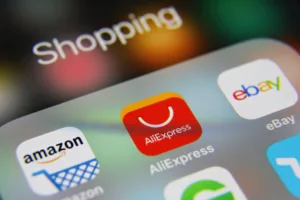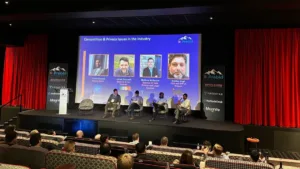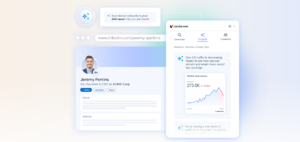By Alisa Patotskaya, Founder and CEO of Immersive Fox
The rise of AI and its potential to disrupt industries is a conversation that’s permeated almost every sector, with marketing being no exception. As is a similar case across all industries, the emergence of technological innovations in the marketing space has brought divided opinion: on the one hand, there is the promise of transformation, while on the other, there are deep concerns surrounding issues such as security and ethics.
AI-generated text-to-video content is one such innovation sparking heated debate of late. The ‘digital avatar’ tech has game-changing potential, but it also presents security risks that are making national headlines; the deepfake video featuring consumer finance expert Martin Lewis, being just one example.
Instances such as this, whereby AI is being misused to scam or damage reputation, create an understandable sense of caution and concern in the industry. However, for those who use the technology ethically, safely and responsibly, there is significant value to be had within marketing strategies, which can ultimately impact bottom lines positively.
Where AI-generated video content shines
A direct alternative to traditional video content production – an often time-consuming, resource-intensive and expensive task that many businesses struggle with – AI technology allows sales and marketing professionals to create personalised videos at speed, at scale and at a fraction of the cost with the face and voice of you or your employees. This allows marketing teams to reallocate resources more efficiently and focus on refining their strategies.
And what’s the ultimate goal of any marketing strategy? To convert potential leads into loyal customers. Here, AI-generated video content shines. The personalised nature of these videos – which are even capable of auto-translating content into multiple languages- significantly enhances the chances of conversion. Coupling the fact that viewers retain 95% of a message when watching it in video format (compared to only 10% when reading it as text) with the element of personalisation – which has become the cornerstone of modern marketing – AI-generated video takes marketing to a whole new level. At the same time, personalized email marketing campaigns have been shown to increase response rates by at least 25%, without requiring any additional effort or time from sales teams. When customers feel that a brand understands their needs and offers tailored solutions, they are more likely to engage and take action.
With the barrier of traditional video production overcome, marketing teams that utilise this tech are able to stand out in an increasingly crowded digital landscape, leaving a memorable impression on viewers. And in an era where audiences demand authenticity and relevance, this capability ultimately offers brands not just the power to drive conversions, but to connect with their customers on a deeper level, and ultimately propel their business toward sustainable growth.
However, with the apprehension around AI’s security challenges and ethical concerns, what should businesses be doing to avoid potential misuse of personal data and combat any risk of exposing individuals to deepfake content?
Guidelines for safeguarding AI-generated video content – 3 simple checks to stay on the right side of AI
The absence of clear legislation around deepfakes and AI-generated content raises questions about how to strike a balance between innovation and security. As such, responsibility rests with AI service providers to ensure secure and ethical use. So, for those organisations keen to leverage AI to create engaging marketing videos, there are simple tests that can be presented to an AI service provider to safeguard against misuse and ensure they take security seriously.
- One of the easiest ways to assess their credibility is by requesting examples of their work and the content they’ve produced for other clients. If they comply by sharing video or audio content from previous customers, this should raise a red flag. It indicates that they might not prioritise customer security adequately. Ideally, they should not have access to any content that doesn’t pertain to their own company for a robust guarantee of full security.
- If you’re considering digitising yourself or your employees, ensure you inquire about essential documents such as model release forms and licence agreements between your company and the employee. Additionally, you should inquire about their procedures for verifying a person’s identity. It’s important for them to explain how they utilise technologies like automated face recognition and voice recognition.
- Another crucial question revolves around the security of the digital personas they create and who has access to them. The correct response is that no one should have access except for you. This principle extends to the content they generate as well.
A future where creativity and technology converge
While AI-generated content has been misused in certain contexts, leading to some warranted apprehension, much like all new technologies, there is a clear opportunity for innovation if used responsibly. From cost savings and operational efficiencies to rapid market penetration and heightened personalisation, the advantages of integrating AI-generated video content into marketing strategies is nothing short of a revolution.
As the industry moves forward, awareness, ethical practices, and collaboration between regulators, businesses, and technology providers will be key to riding the AI-generated video content wave safely and responsibly.
With some simple safeguarding practices, this is not just a tool for replication; it’s a catalyst for innovation.









